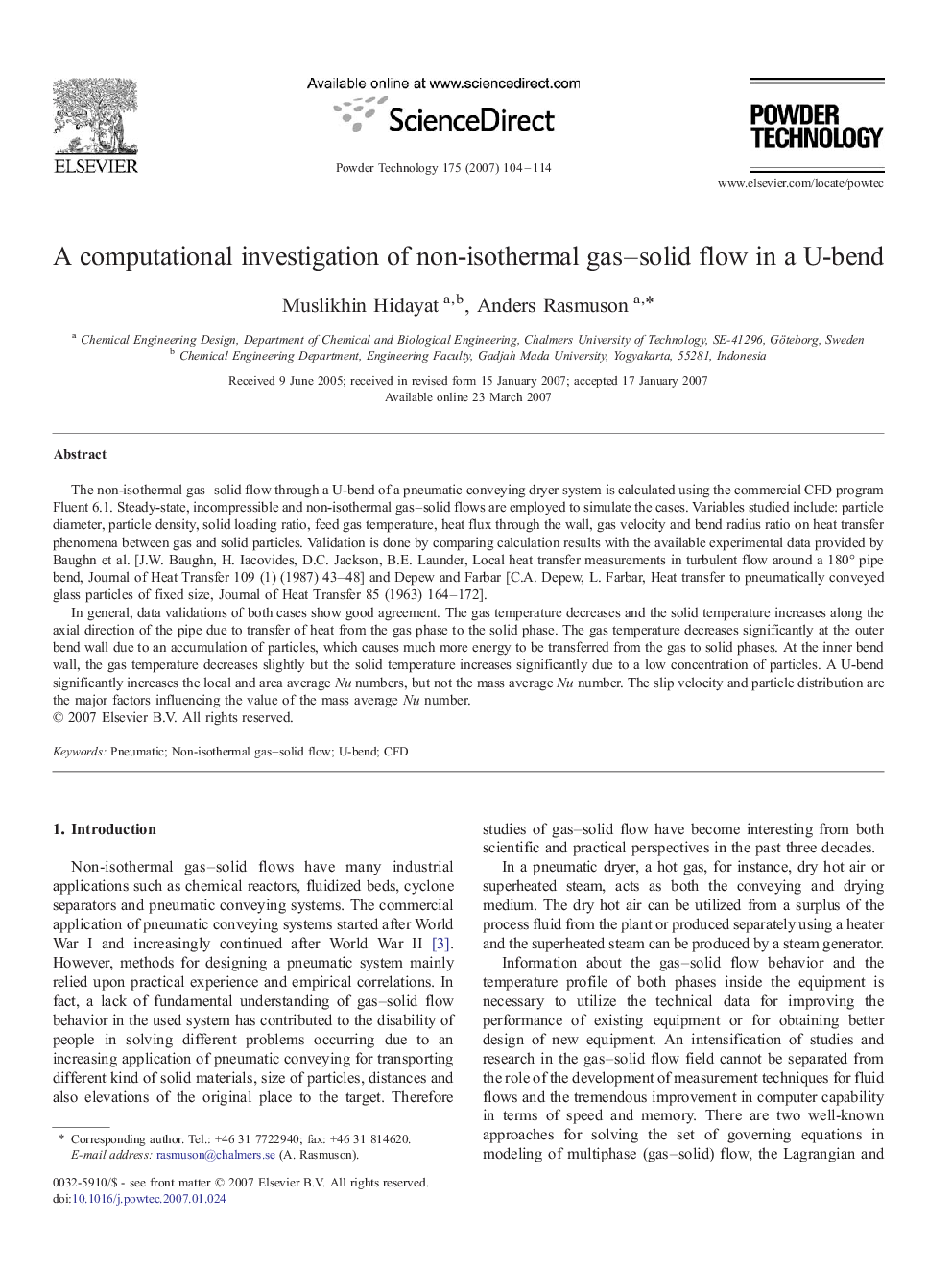| کد مقاله | کد نشریه | سال انتشار | مقاله انگلیسی | نسخه تمام متن |
|---|---|---|---|---|
| 239059 | 465792 | 2007 | 11 صفحه PDF | دانلود رایگان |

The non-isothermal gas–solid flow through a U-bend of a pneumatic conveying dryer system is calculated using the commercial CFD program Fluent 6.1. Steady-state, incompressible and non-isothermal gas–solid flows are employed to simulate the cases. Variables studied include: particle diameter, particle density, solid loading ratio, feed gas temperature, heat flux through the wall, gas velocity and bend radius ratio on heat transfer phenomena between gas and solid particles. Validation is done by comparing calculation results with the available experimental data provided by Baughn et al. [J.W. Baughn, H. Iacovides, D.C. Jackson, B.E. Launder, Local heat transfer measurements in turbulent flow around a 180° pipe bend, Journal of Heat Transfer 109 (1) (1987) 43–48] and Depew and Farbar [C.A. Depew, L. Farbar, Heat transfer to pneumatically conveyed glass particles of fixed size, Journal of Heat Transfer 85 (1963) 164–172].In general, data validations of both cases show good agreement. The gas temperature decreases and the solid temperature increases along the axial direction of the pipe due to transfer of heat from the gas phase to the solid phase. The gas temperature decreases significantly at the outer bend wall due to an accumulation of particles, which causes much more energy to be transferred from the gas to solid phases. At the inner bend wall, the gas temperature decreases slightly but the solid temperature increases significantly due to a low concentration of particles. A U-bend significantly increases the local and area average Nu numbers, but not the mass average Nu number. The slip velocity and particle distribution are the major factors influencing the value of the mass average Nu number.
CFD calculations of non-isothermal gas–solid flow through a U-bend of a pneumatic conveying dryer, show that a U-bend significantly increases the local and area average Nu numbers, but not the mass average Nu number. The slip velocity and particle distribution are the major factors influencing the value of the mass average Nu number.Figure optionsDownload as PowerPoint slide
Journal: Powder Technology - Volume 175, Issue 2, 6 June 2007, Pages 104–114